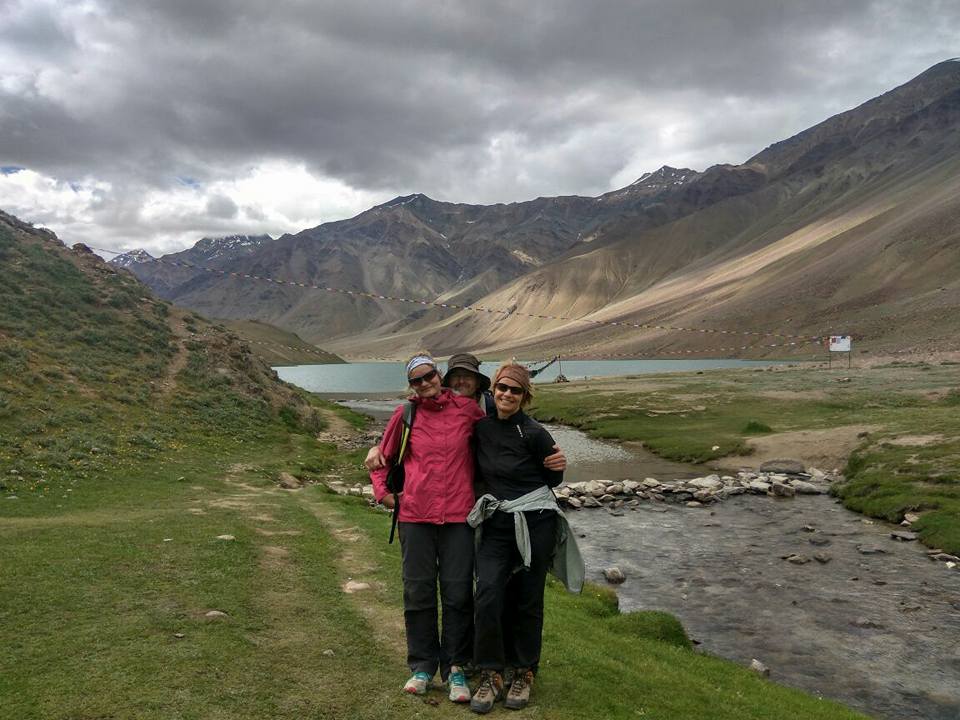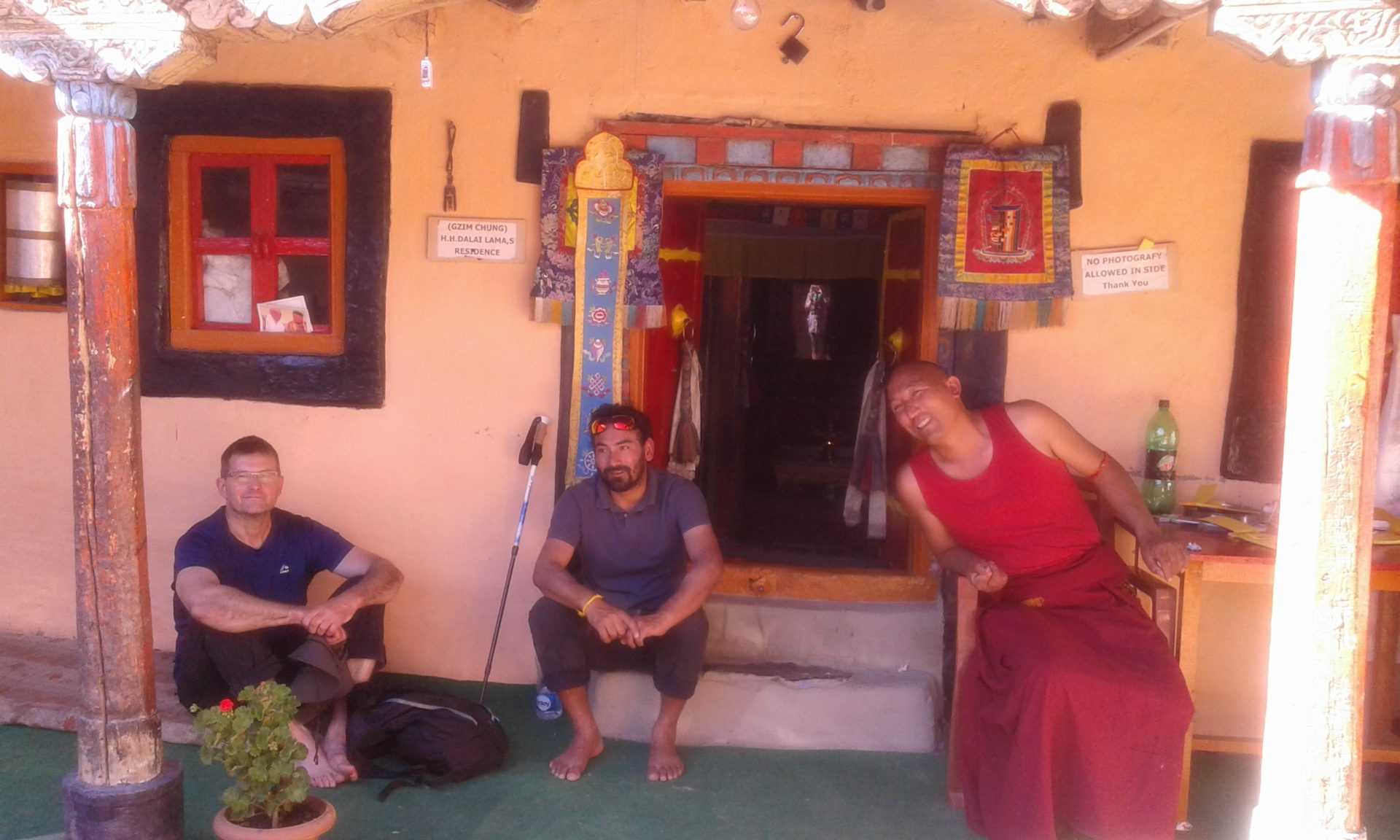The Spiti Valley

The Spiti Valley – “Spiti” means “The land in between”. It is the land between Tibet and India. And although Spiti belongs to the western part of the Indian state of Himachal Pradesh, the valley, delineated by mighty mountain ranges, is so different from the rest of India.
Only for a few summer months of the year, the remote Spiti valley can be reached via high passes and poor roads. For the rest of the year, visitors will have to take a journey of several hundred kilometres from the south. But then it is cold and uncomfortable in the so-called high mountain desert at an altitude of more than 3000 meters. Temperatures in the Indian Himalayan region drop to -35°C.

The hardened locals use the short summer to prepare for the long winter. They grow barley, potatoes and peas. While barley is mostly for self-consumption (it is used to produce nourishing tsampa, a cereal porridge, bread and alcohol), the locals still earn a little money by exporting potatoes and peas to central India.

Here the stubborn yak is crossed with the tame cow and out comes the churu, a strong and faithful one. Yogurt and butter are produced from the milk and in winter animals are slaughtered in the villages and the meat is distributed among the village community.

The Buddhist population celebrates its festivals and weddings in the long winter. So they pass the time and keep themselves in a mood.

The firstborn son of every family will later inherit the land, while the second-born usually expects a life as a Buddhist monk in one of the thousand-year-old monasteries.

With a length of about 130 km, the Spiti valley is quite small and manageable.
Small villages are located high up on more than 4000 meters hidden in small side valleys on raging rivers. Historically significant monasteries nestle on the dry mountain slopes and if one walks a little through the barren and treeless landscape, one can not only meet one or the other Capricorn, but also finds over 150 million years old fossils, from the time when this region was still flooded by the Tertiary Sea. If you walk a little further through the thin air you will even come across one or the other mountain lake. Afterwards come the referenced glaciers and at some point you would end up in Tibet.
On the road to the Spiti Valley

Spiti is a real insider tip for mountain lovers, culture lovers and adventurers.
The valley is less touristy than the more northerly region of Ladakh, but offers a similar landscape and culture.

Since the Spiti Valley is located in the rain shadow behind the high mountains, a visit is particularly suitable in the monsoon season from June to September, when it rains heavily in the rest of the country, because it stays mostly dry here.

Many travelers explore the Spiti Valley in the form of a motorcycle tour or jeep safari. Others use the extensive trekking trails to experience the valley and spend the night partly in tents, partly in old monasteries or in so-called homestays at local homes.
A bike tour through the Spitital is also an unforgettable and very sporty experience. In the Spiti Valley there is virtually no traffic and the roads are mostly unpaved jeep tracks, which make every mountain biker’s heart beat faster.
But the Spiti Valley is also suitable for just a few relaxing days of vacation.
How to get to the Spiti Valley

The journey to the valley is long and exhausting. For the 200 kilometers from the starting point Manali it takes between 8-10 hours. It goes over high 4000 meter passes, unpaved jeep tracks, through riverbeds and streams. Here you should only want an experienced driver with terrain capable vehicles!
Arriving in Kaza, the Ditrikt capital, it takes at least a day to get used to the thin air high up on 3600 meters. Deep breaths, headaches and sleepless nights must be taken into account. But once you have recovered from the strenuous journey and adapted to the altitude, the Spiti Valley offers fascinating day trips.
Day Trips in the Spiti Valley

I myself recently spent six wonderful and peaceful days with my family in Spiti. As a base we had a small cozy hotel in Kaza.

During the day we went on hikes with fossil findings near Langza, we took part in Buddhist ceremonies in the monasteries Dhankar and Ki, visited the traditional villages of Kibber and Lalung and took bike tours on the high and unused jeep slopes Spitis between Lalung and Demul. The hike from the 4500 meter high Kunzum Pass to the Chandratal Lake (4200 m) was also a highlight. Technically, the so-called “Moon Lake” is located in the Lahaul valley, but is located on the way between Manali and Spiti and is an ideal stopover during the long journey back.

Although my family is very different in itself and has very different needs for a successful holiday, we managed to spend a harmonious time with each other and combined my desire for action and adventurousness, with the desire for moderate sporting activity for my father and some calm activities for my mother.
We met incredibly friendly people, were surprised by the simplicity of life here, enjoyed delicious food and enjoyed a happy time even without a lot of electricity and internet.

Spiti- we’ll be back! If only there wasn’t this arduous journey… But this is probably quite a good thing, otherwise this jewel of the Himalayas was otherwise already taken over by tourism too much.






